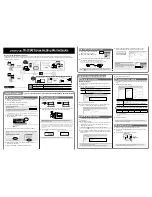
SXBlue II GPS Series Technical Reference Manual
46
“nnnn” is the subscription number in the example. The receiver will respond with
“subscription accepted.”
Auto-Dif is now loaded as the current application and is ready for use.
3. Finding out the current application
After the $JAPP,OTHER or $JAPP,1 or $JAPP,2 command is used to switch to one of
the two installed applications, you might use the $JT command to find out which of the
two applications is the current or “active” one.
Table 3-1 $JT Response and Application
Active Application
$JT Reply
WAAS (SBAS) / LBAND
SX2g
Auto-Dif
SX2i
Local-Dif and Local-RTK
SX2r
Local-Base
SX2b
3.3.2.3 Interpreting Subscription Date Codes
A date code is a 4-digit number that can be used to gain a quick understanding of what
subscription codes were applied to the receiver. There are two commands that provide the date
code of the receiver. This section provides information on interpreting the $JI and $JK
subscription date codes. An example of the $JI and $JK subscription date codes is listed below.
The date code is in bold and underlined text.
$>JI,12838,1,7,26022003,01/01/1900,01/01/
3000
,6.8Hx,38
$>JK,01/01/
3000
,0,(1,2 or no number)
The field to the right of the date code in the $JK response (“0” in this example) corresponds to
the hexadecimal equivalent to the last two digits of the date code.
Table 3-2 Date Codes and Enabled Applications
Date
Code
Hex
($JK)
Enabled Applications
Date
Code
Hex
($JK)
Enabled Applications
3000
0
10Hz / SBAS
3008
8
10Hz / SBAS / L-Dif
3001
1
20Hz / SBAS
3009
9
20Hz / SBAS / L-Dif
3002
2
10Hz / SBAS / Auto-Dif
3010
A
10Hz / SBAS / Auto-Dif / L-Dif
3003
3
20Hz / SBAS / Auto-Dif
3011
B
20Hz / SBAS / Auto-Dif / L-Dif
3004
4
10Hz / SBAS / L-RTK
3012
C
10Hz / SBAS / L-RTK / L-Dif
3005
5
20Hz / SBAS / L-RTK
3013
D
20Hz / SBAS / L-RTK / L-Dif
3006
6
10Hz / SBAS / Auto-Dif / L-RTK
3014
E
10Hz / SBAS / Auto-Dif / L-RTK / L-Dif
3007
7
20Hz / SBAS / Auto-Dif / L-RTK
3015
F
20Hz / SBAS / Auto-Dif / L-RTK / L-Dif
















































